When invasive plants are unleashed on native ecosystems they can proliferate like cancer cells, and with the same effect. That’s because their natural controls remain in their home turf.
Each year at least ten million acres of public land gets infested with invasive vegetation. Native plants and wildlife are evicted.
Aquatic ecosystems suffer as well. About 15 years ago Big Island Pond in southern New Hampshire, on whose shore my extended family has had camps since 1929, was invaded by variable-leaf water milfoil, native to the Southeast and Midwest but not New England. It threatened to choke out fish and wildlife habitat.
So our watershed association contracted with the state Department of Environmental Services (DES) to apply a short-lived, pelleted formulation of the herbicide 2,4-D, one of several EPA-approved tools for reducing aquatic-weed infestations to “maintenance mode” in which ongoing control is far easier and less expensive.
Objectors, organized as the “Suicide Swimmers,” pledged to leap in front of the DES boats and, if necessary, be run over.
Other objectors, led by my cousin Steve French and friends Skip and Cindy Lanouette, thought there might be alternatives to both herbicide and suicide — mechanical removal perhaps.
They were appalled when they inspected DES’s weed harvester — a motorless barge with a rake.
So in 2008 Skip took time from building parts for U.S. satellites in his lakeside shop to oversee conversion of a pontoon party boat to a milfoil harvester, fitting it with a Venturi pump (used for sucking gold from riverbeds). Divers, supplied with air from another onboard pump, uprooted milfoil and fed it into the Venturi’s submerged hose.
Today our milfoil is in maintenance mode, and our divers struggle to find it. The “Milfoiler,” as we dubbed our craft, is being replicated throughout the state. And Big Island Pond is now the national poster child for non-chemical aquatic-weed control.
We learned two important lessons: 1. The public can scare itself silly by Googling up non-peer-reviewed herbicide memes. And 2. Non-chemical alternatives are always preferable.
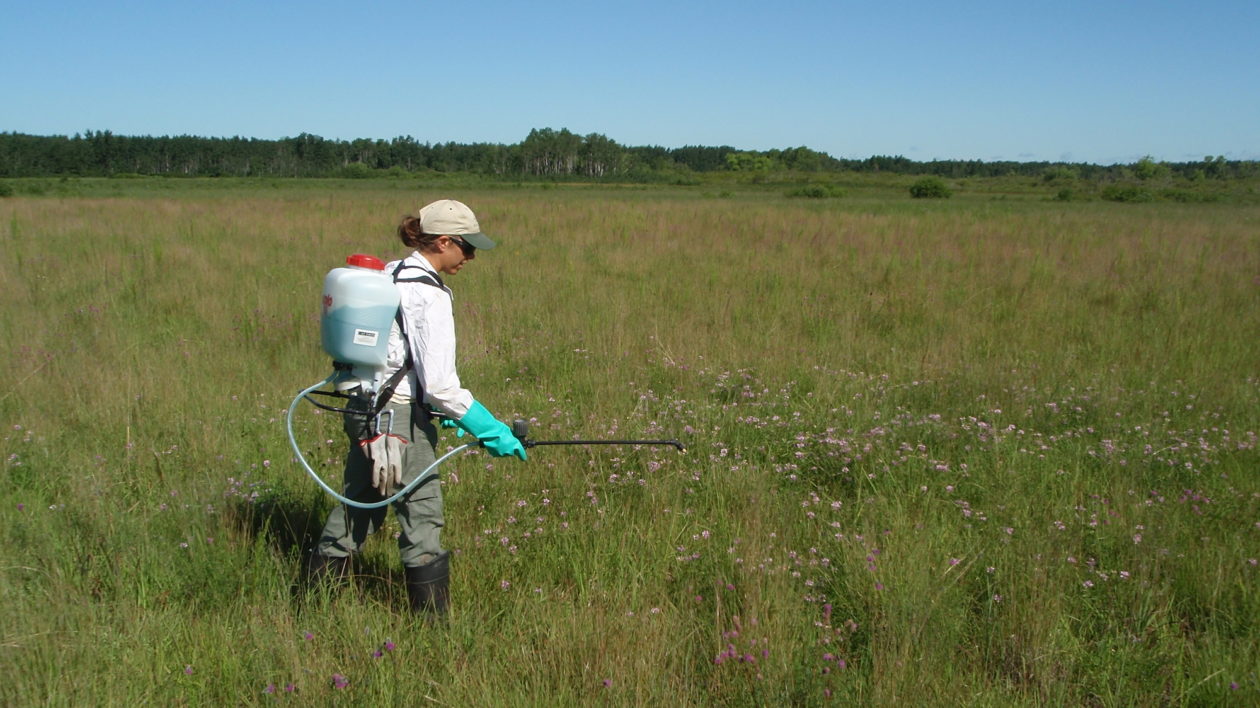
Early Detection/Rapid Response
But often there aren’t non-chemical alternatives, as I learned from The Nature Conservancy in 1997. On the Idaho side of the Snake River I hiked with ecologist Janice Hill through the Conservancy’s Garden Creek Preserve, an island of natives in a sea of aliens. Butterflies skipped over bunchgrasses. Overhead magpies streamed past, and a golden eagle wheeled.
“Weeds are our biggest management challenge,” Hill told me. “In 1995 we sold 12,000 acres of the preserve to the BLM; and we’ve been working cooperatively on the whole area, using an integrated approach.” This, she explained, included herbicides, hand pulling where possible, and biological control via introduced insects that coevolved with the weeds (and which, when caged, had passed rigorous “starvation tests” by dying rather than eating related native plants).
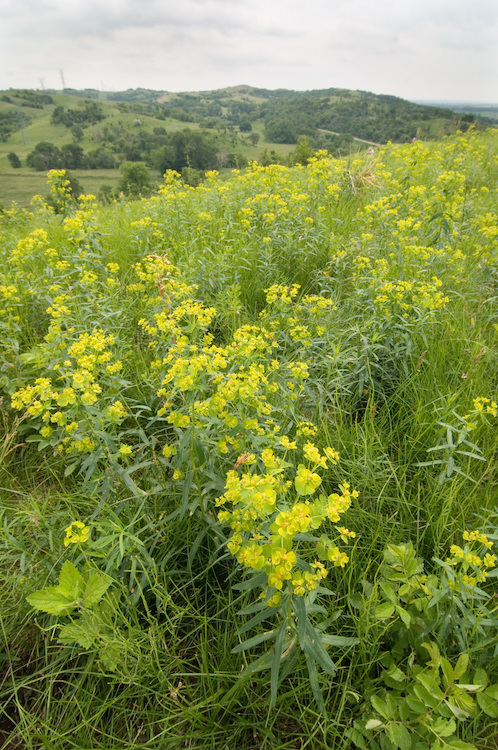
From the Washington side of the river, atop mile-high Weissenfels Ridge, I saw what happens when invasive plants are ignored. The contrast between the green preserve in Idaho and the brown hills and benches in Washington was heartbreaking. This public land had been rendered essentially useless to wildlife by yellow starthistle, a prolific seed producer which couldn’t (and still can’t) be effectively controlled without herbicides.
Garden Creek Preserve had recently been invaded by leafy spurge from Eurasia, another invasive that couldn’t (and still can’t) be effectively controlled without herbicides. It spews seeds as far as 15 feet, shoots out horizontal “rhizome palisades” six feet into the earth, and blooms earlier than most natives.
But because it was a newcomer it could be contained via a strategy that minimizes herbicide application called Early Detection/Rapid Response — favored wherever possible by all wildland managers.
That’s how leafy spurge is being controlled at the Conservancy’s Tallgrass Aspen Parkland in northwestern Minnesota — via the herbicide Plateau. “We have a light infestation, and we want to keep it that way,” remarks the preserve’s land steward, Jonathan Eerkes. “We use prescribed fire on non-native grasses. But that doesn’t work on leafy spurge. You can’t pull it, and it’s resistant to grazing. There’s a bio control that helps, but not here because our spurge populations are small enough that they can’t support the bio-control bugs. So if you don’t want to use herbicide, you have to let the problem get large enough for bio control to kick in; and we know spurge would then take over our native habitats.”
The Scourge of Spurge
Where spurge has taken over native habitats in the upper Great Plains it has excluded elk, deer, pronghorn and bison and severely reduced bird populations along with mammalian and avian predators.
At the turn of the 21st century North Dakota’s spurge infestation covered 1.8 million acres, and it had been doubling every decade. State universities — from Montana, Wyoming, Nebraska, South Dakota, and North Dakota as the lead — assembled a research team to find effective herbicides. The few that worked were prohibitively expensive.
Among the hundreds of native plants being replaced by spurge was the federally threatened western prairie fringed orchid. Any of the tested herbicides would have killed it along with the spurge.
Finally, the researchers tried Facet, used by rice farmers. To their astonishment and delight it took out the spurge without harming the orchid. About the only non-targets it killed were invasive grasses, thereby providing additional benefit.
“As far as I know we’re the only ones to get permission from the U.S. Fish and Wildlife Service to use a herbicide over an ESA-listed plant,” reports North Dakota State University weed scientist Dr. Rodney Lym. “Where the orchid isn’t we now have 16 effective herbicide options. We’ve stopped the spread of leafy spurge and are reducing it. It’s a good success story.”
Wherever spurge is in retreat native plants and wildlife are surging back.
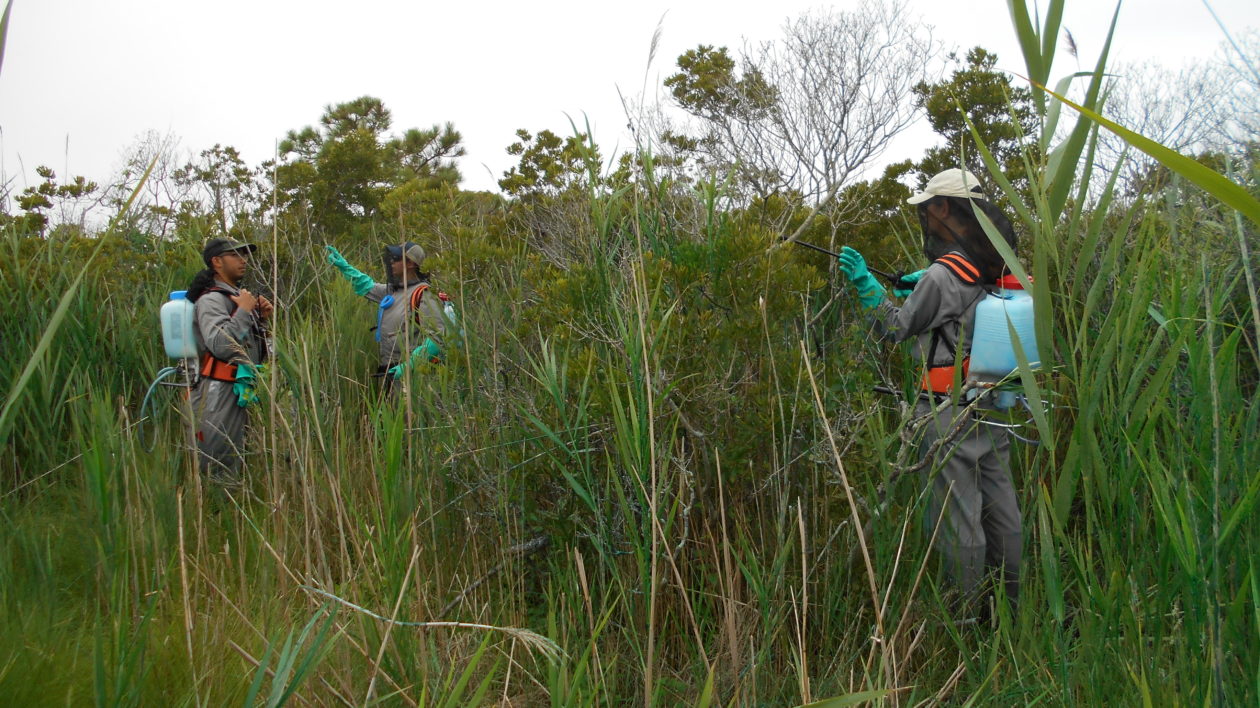
Dealing with the Deep Roots
Grievously destructive to wetland ecosystems is phragmites, a perennial grass that crowds out such natives as cattails, bulrushes, marsh grasses, baccharis shrubs, bayberry shrubs and dune grasses, thereby excluding waterfowl, shorebirds, wading birds, aquatic mammals, amphibians, reptiles and fish.
So deep-rooted is phragmites that it’s extremely difficult to pull or excavate; and, like lawn grass, it responds favorably to cutting or mowing. In most cases the only option is herbicides, usually glyphosate. Few, if any, herbicides have been more thoroughly studied or proven safer for wildlife and humans. And, because glyphosate is used in agriculture far more than any other herbicide, few, if any, herbicides are more controversial.
So much glyphosate is applied to crops that some weeds have developed resistance, but resistance is rarely a problem in conservation use.
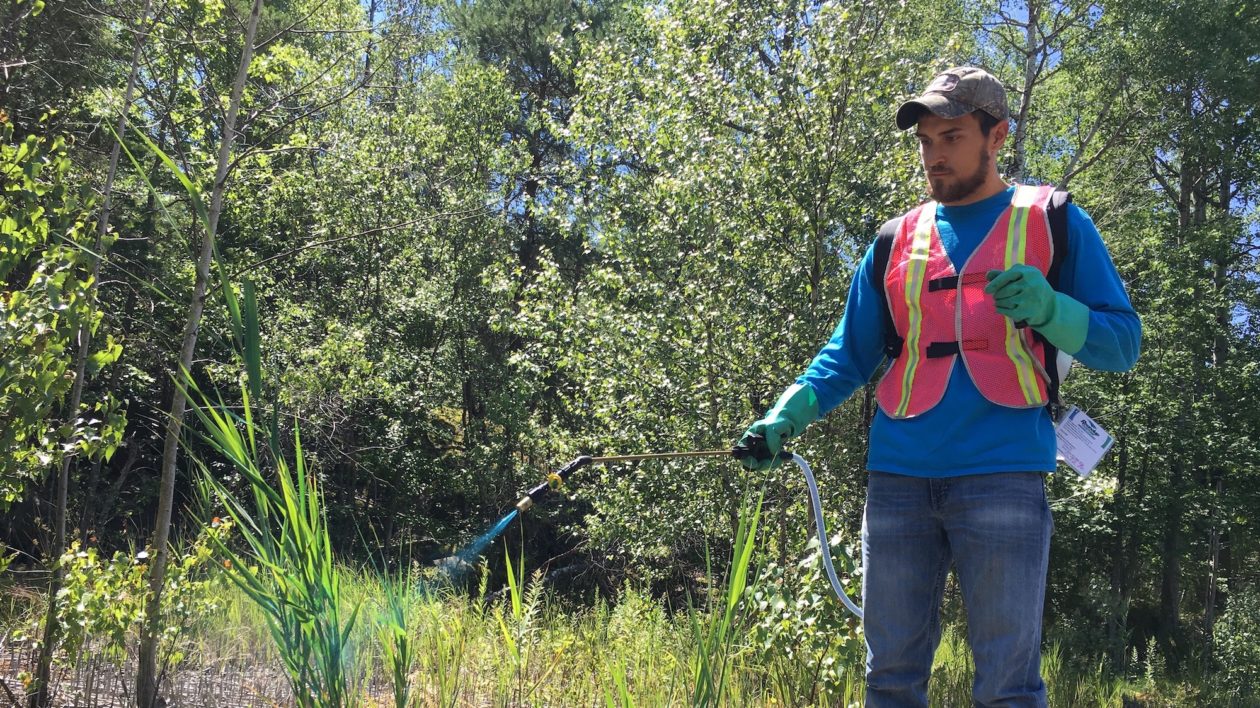
In 2006 Kristina Serbesoff-King, Director of Science and Planning for The Nature Conservancy’s Florida Chapter, participated in a day of invasive control in the Adirondacks. At that time New York State considered glyphosate so safe that it permitted nothing else in “forever-wild lands.”
“I thought that was crazy,” Serbesoff-King told me, “because there was this whole suite of herbicides that would have been so much better for lots of what we were trying to do.”
The state now allows other herbicides. But Brendan Quirion, the Conservancy’s Adirondack Invasive Species Program Manager, uses glyphosate for Early Detection/Rapid Response. “We’ve managed over 350 infestations,” he says. “We do lots of work on our preserves and in the Adirondack Park. We’ve found we can eradicate local infestations if they’re below a certain size.”
For small infestations the Conservancy uses a miniscule amount of glyphosate, dripping it onto cut stems or injecting it. For others it relies on foliar treatment from backpack sprayers.
“We see tremendous resurgence of native plants even after the first year,” says Quirion. “Most criticism of glyphosate comes from agricultural settings where it’s broadcast sprayed over extremely large areas multiple times a year in presence of seasonal or immigrant workers. That’s very much the opposite of the conservation approach.”
Another wildlife-limiting invasive the Conservancy battles in the Adirondacks and elsewhere is Japanese knotweed — AKA “Godzilla weed,” a bamboo-like perennial that can grow ten feet high. Quirion and his team achieve excellent results by injecting it with glyphosate.
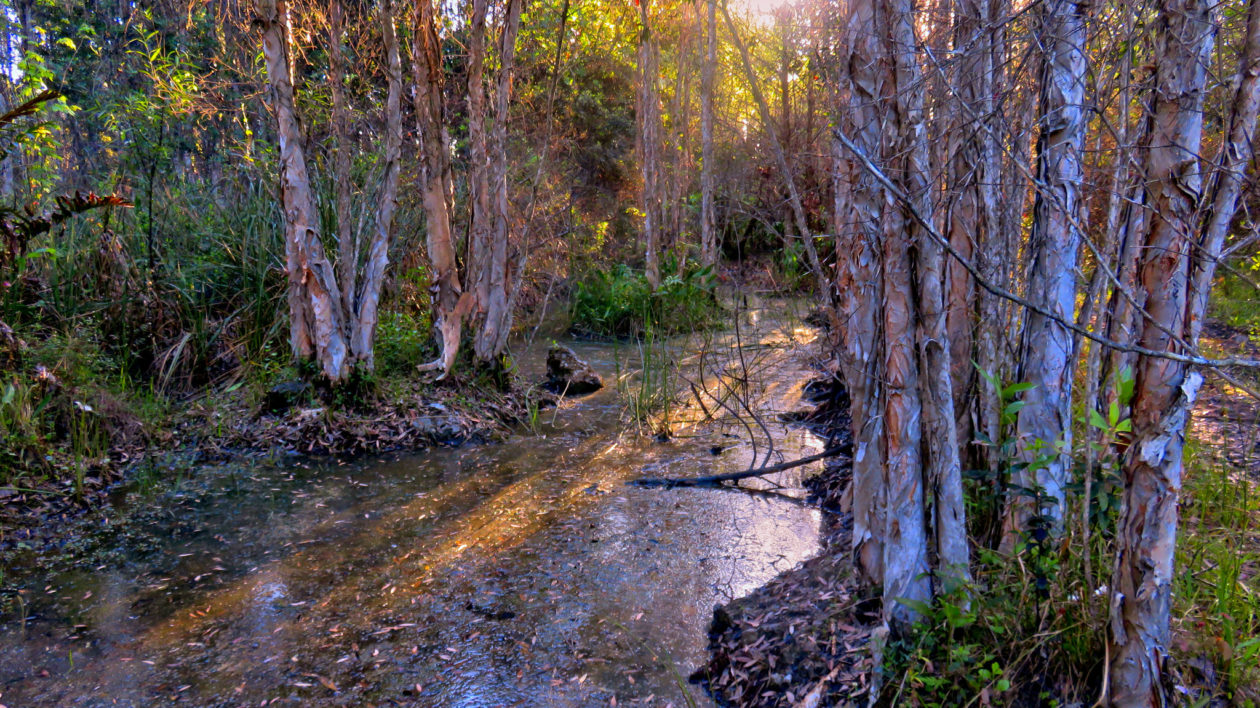
Weeds in Maintenance Mode
There’s even good news from Florida, a weed hell. Restoration botanist LeRoy Rodgers, who worked for the Conservancy’s Florida Chapter in the 1990s, now manages more than 70 invasive plants for the South Florida Water Management District.
“Our goal,” he declares, “is getting weeds down to maintenance mode so we can deal with small patches and apply small amounts of herbicide. Herbicides are a necessary tool, but we use them judiciously and only those approved by EPA for aquatic use. They have very low eco-toxical profiles and break down quickly.”
Among Florida’s nastiest invasives is old world climbing fern. It smothers entire “tree islands” (patches of forested wetlands in the Everglades), excluding such wildlife as wading birds, ducks, raptors, deer, marsh rabbits, otters, opossums, raccoons, reptiles and amphibians.
Where Rodgers and his team have sprayed infested tree islands with glyphosate they’ve seen “amazing results, speedy resurgence of native ferns and forb-type understory plants.”
“We thought all the native canopy growth was dead,” says Rodgers. “Though stressed and defoliated, species like dahoon holly, swamp bay, wax myrtle, coco plum and red maple are coming back.”
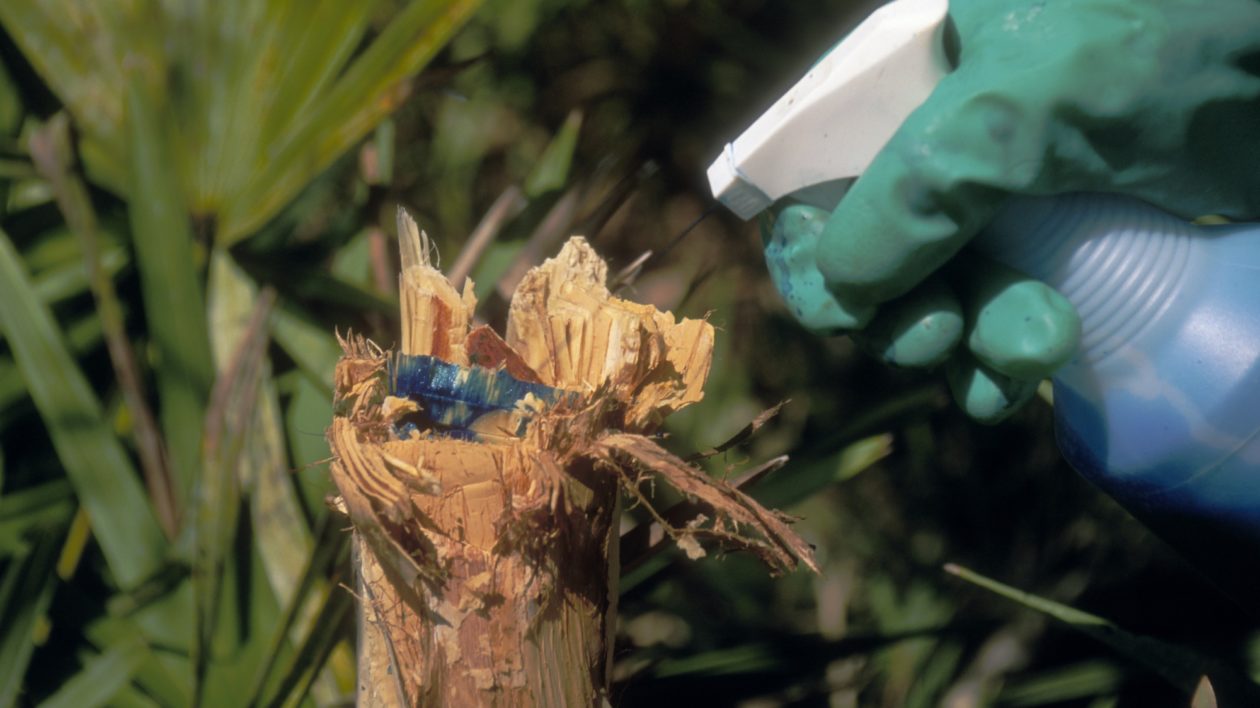
Nowhere is Florida’s infestation of old world climbing fern more hideous than in the Arthur R. Marshall Loxahatchee National Wildlife Refuge. But Rodgers is currently mapping it for aggressive management.
Another spectacular Florida success story is the war on melaleuca, a water-sucking tree native to Australia introduced in the late 1800s in hope of draining wetlands. The District and partners use an integrated approach of bio control, mechanical removal, prescribed fire and painting cut stumps with glyphosate or imazapyr. They’ve restored huge areas of open marsh for all manner of fish and wildlife.
“Now we’re in maintenance mode where we cut or pull seedlings,” says Rodgers.
For a large element of the public “herbicides” remains a scary word. But everyone who loves nature needs to learn about them and support their proper use by wildland managers. One cannot work against these essential recovery tools without also working against fish and wildlife.
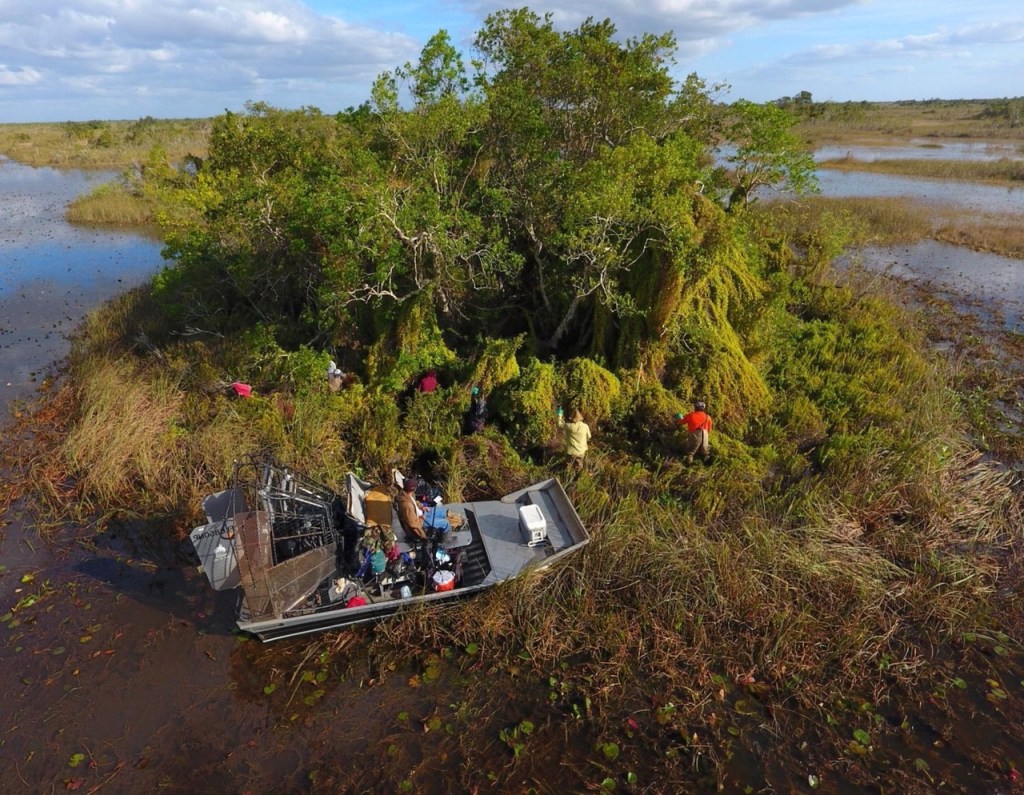

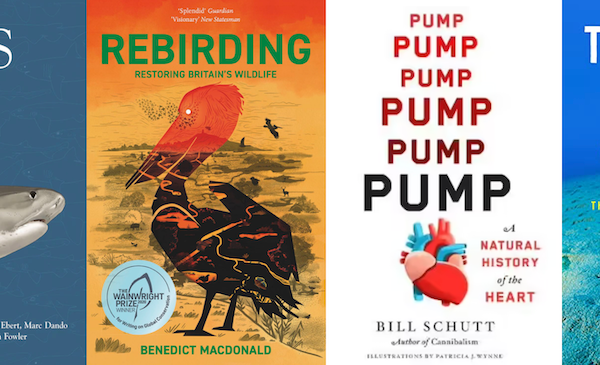
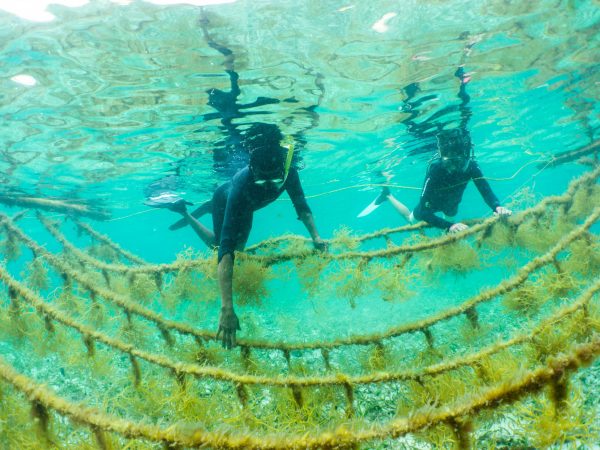
Ted, good article, I may quote you in my website, https://www.seedrain.org/, that includes my herbicide rationale and a political suggestion to motivate stewardship of private lands that harbor invasive seeds that reinfest and waste our herbicide work.
One suggestion: your cut-stump photo is not a good example of good practices, where the glyphosate is squirted and not taken up by the heartwood. The vascular system is in the cambium just inside the bark, and you can use less herbicide with clean cuts: a bypass pruner or saw that doesn’t crush the vascular tissues. I prefer a “saw-frill” method explained in my step-by-step guide (website still in process of adding illustrations), or we mostly inject larger invasive trees with shells from an EZJect lance. Thanks for your education on this hot button issue.
Good one Ted! I would mention Garlon (essentially diesel) that they paint on tamarisk stumps etc, and copper nails will almost always kill a tree.